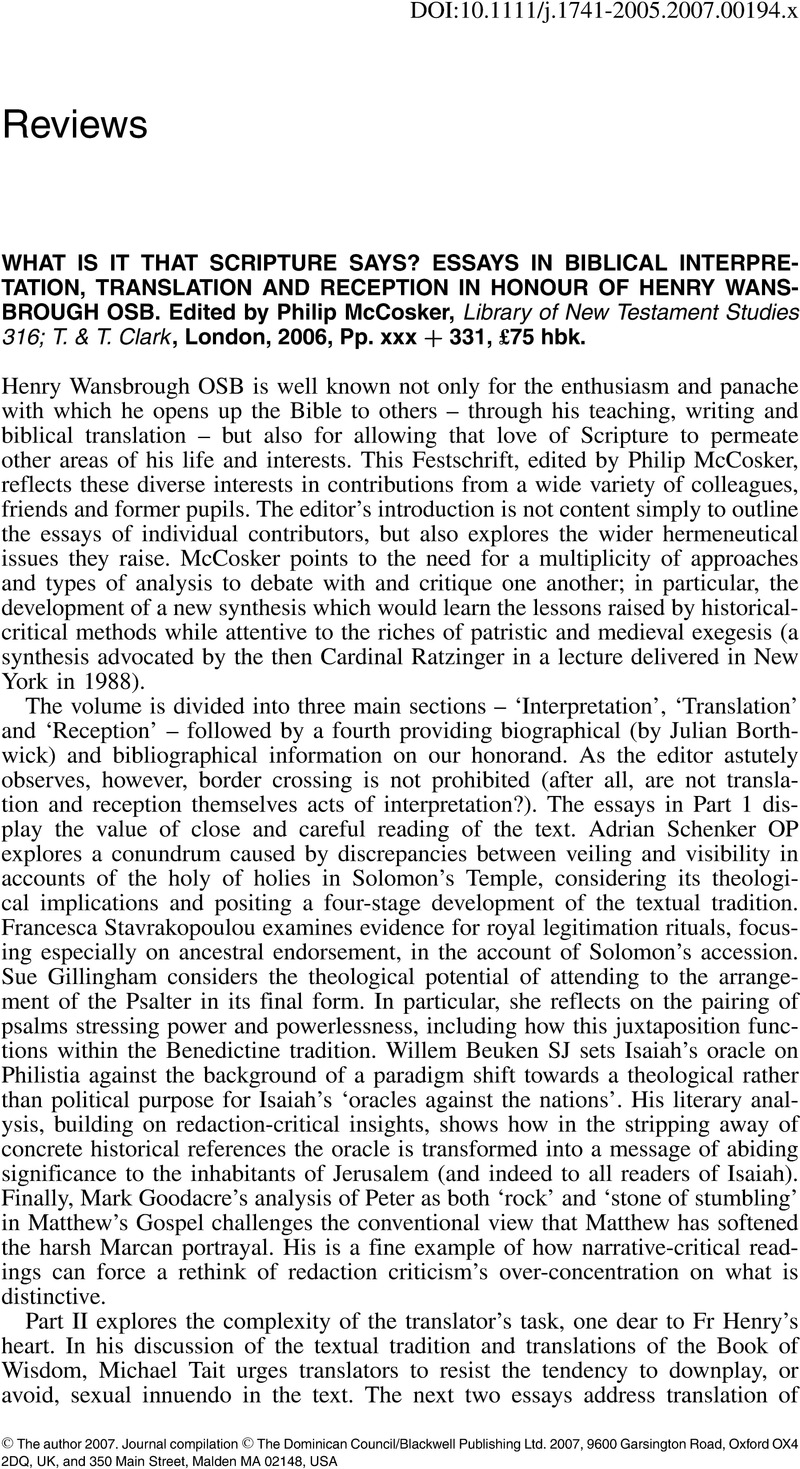No CrossRef data available.
Article contents
What is it That Scripture Says? Essays in Biblical Interpretation, Translation and Reception in Honour of Henry Wansbrough OSB. Edited by Philip McCosker, Library of New Testament Studies 316; T. & T. Clark, London, 2006, Pp. xxx+331, £75 hbk.
Review products
What is it That Scripture Says? Essays in Biblical Interpretation, Translation and Reception in Honour of Henry Wansbrough OSB. Edited by Philip McCosker, Library of New Testament Studies 316; T. & T. Clark, London, 2006, Pp. xxx+331, £75 hbk.
Published online by Cambridge University Press: 01 January 2024
Abstract
An abstract is not available for this content so a preview has been provided. Please use the Get access link above for information on how to access this content.

- Type
- Reviews
- Information
- Copyright
- Copyright © The author 2007. Journal compilation © The Dominican Council/Blackwell Publishing Ltd.


